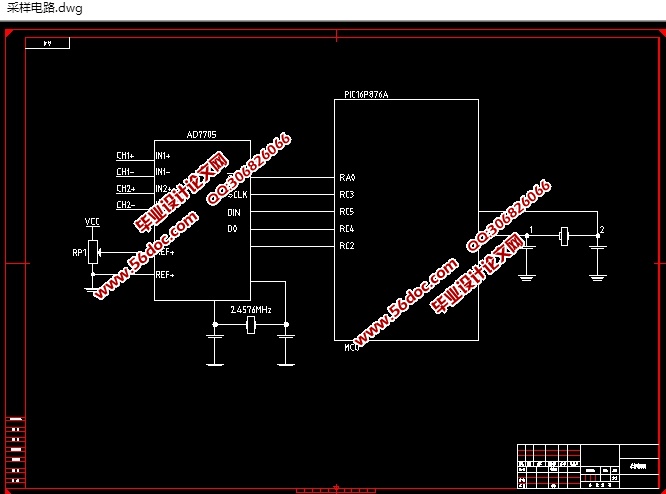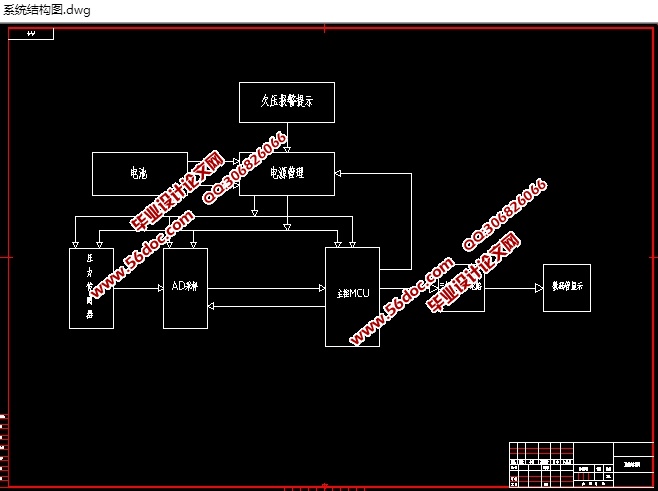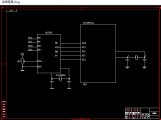轨道压力测试系统的设计(含CAD图)
来源:56doc.com 资料编号:5D17321 资料等级:★★★★★ %E8%B5%84%E6%96%99%E7%BC%96%E5%8F%B7%EF%BC%9A5D17321
资料以网页介绍的为准,下载后不会有水印.资料仅供学习参考之用. 密 保 惠 帮助
资料介绍
轨道压力测试系统的设计(含CAD图)(论文说明书8700字,CAD图纸3张)
摘 要
轨道电路是信号联锁的室外重要设备,起着保证行车和调车作业安全的作用。它能监督检车某一固定区段内的线路是否有列车运行、调车作业或车辆占用的情况,并能显示该区段内的钢轨是否完整。它是以钢轨为导线,轨缝简用接续线连续起来,一端接电源,另一端连接受电器,通过轨道电流来工作。
本文将以单片机为核心设计了轨道压力测试系统的结构图、程序指令、流程图等等,在保留了原始轨道压力测试系统的基本功能的同时又增加了一系列的实用功能并简化其电路结构,其将以控制方便,灵活,只要改变输入单片机的控制程序,便可以控制轨道压力测试系统,方便,简洁。
关键词 单片机控制系统 可靠性 系统
Abstract
The track circuit is an important equipment of outdoor signal interlocking system, and plays to ensure traffic safety of shunting operation function. It can within the supervision and inspection of a fixed section line whether occupied by the train operation and shunting operation or vehicle, and can display the section of the rail is complete. The rail is a conducting wire, and the rail joint is continuously connected with a continuous line, one end is connected with a power supply, and the other end is connected with the electric appliance.
The single-chip microcomputer as the core design of rail pressure test system structure diagram, program instructions, flow charts, and so on, while retaining the original rail pressure test system the basic function and added a series of practical function and simplify the circuit structure, it will to facilitate the control, flexible, as long as the change in the input of the MCU control procedures, they can control rail pressure testing system is convenient.
Keywords Singlechip microcomputer Forging machine



目 录
摘要 I
Abstract II
1绪论 1
1.1课题的研究背景和历史意义 1
1.2轨道压力测试系统的功能 2
1.3 应用单片控制系统优点 3
2 系统的组成及其工作原理 4
2.1单片机的作用和功能 6
2.2单片机的应用场合 8
3 硬件系统的设计 10
3.1电源电路设计 12
3.2采样电路设计 13
3.3显示与报警电路设计 14
3.4传感器的工作原理 14
3.5故障检测及显示系统的构成 14
4 系统软件的设计 16
4.1采样与数据处理 17
4.2数据处理算法设计 19
4.3程序流程图 21
4.4程序源代码的生成 22
结论 23
致谢 24
参考文献 25
|







